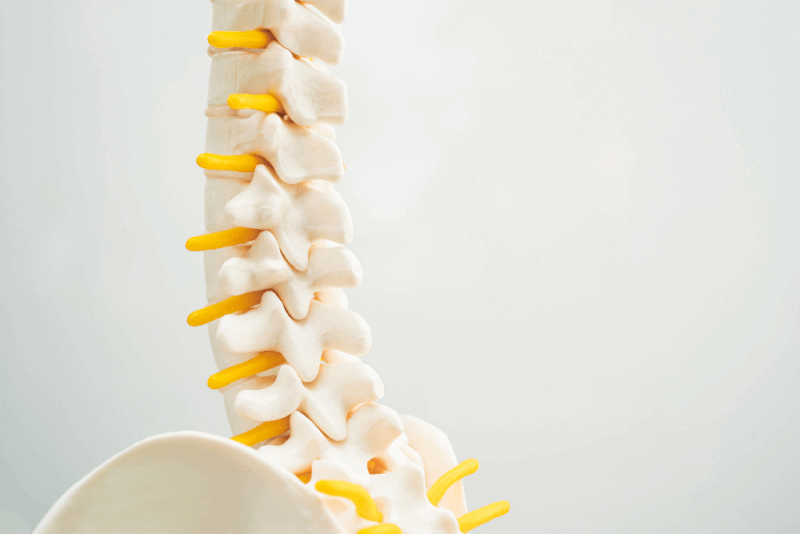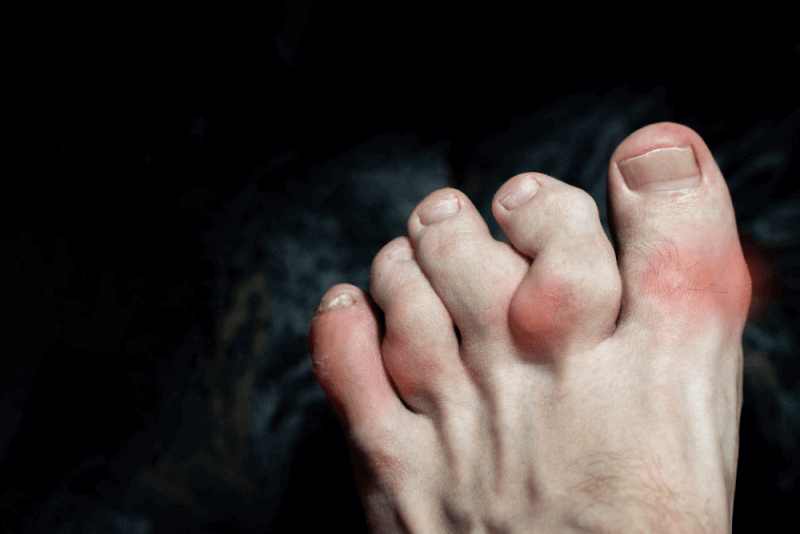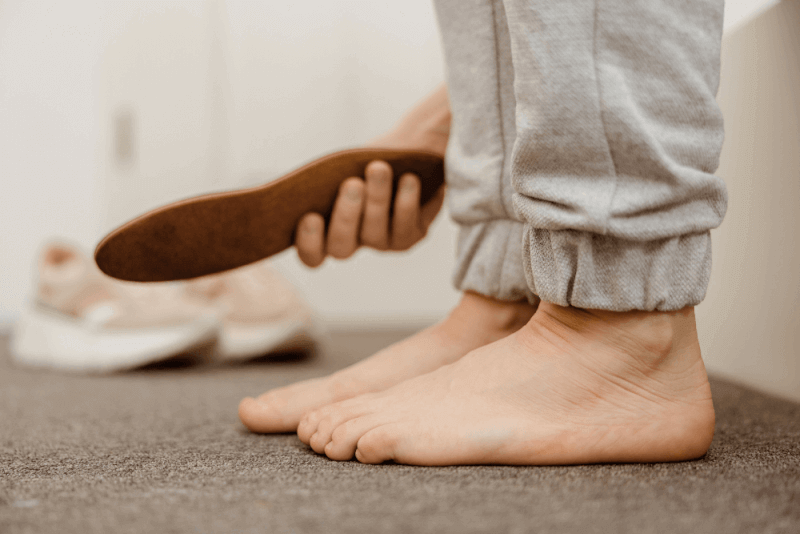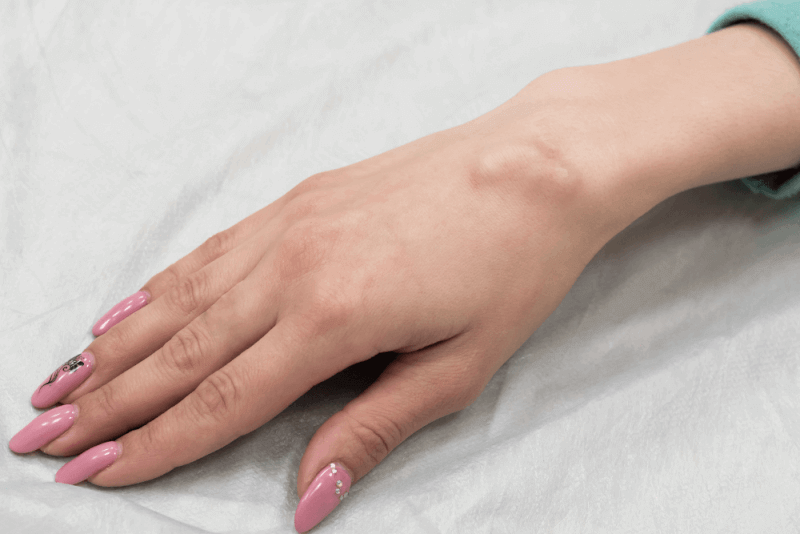What is spinal stenosis?
The narrowing of one or more spaces in the spinal canal is called canal stenosis or spinal stenosis. The spinal canal is the tunnel that runs through each of the vertebrae. Inside this tunnel is the spinal cord. Narrowing of the spinal canal compresses the spinal cord and the nerves that branch off from it.
The narrowing of the canal can cause irritation and compression of the spinal cord or nerves. This can lead to back pain and other nerve problems such as sciatica. Various conditions and injuries can cause narrowing of the spinal canal.
Spinal stenosis, a health condition that can be seen in any age group, is often seen in people over the age of 50. The first of the two regions where canal narrowing is most common is the lower back. This condition, also called lumbar spinal stenosis, causes the lumbar vertebrae to be affected.
The lumbar vertebrae, known as L1 to L5, are the largest of all vertebrae. The second area that is often affected by canal stenosis is the neck. This condition, called cervical spinal stenosis, can affect all 7 vertebrae in the neck. The vertebrae here are named from C1 to C7. Although canal narrowing can also be seen in the middle part of the back, this is a rare condition.
Why does spinal stenosis (spinal stenosis) occur?
There are various causes of canal narrowing. Many different changes or injuries to the spine can cause narrowing of the canal. Basically, the causes are divided into two main groups. The first of these groups is the causes that develop after birth. The second is spinal canal narrowing that is seen from birth. Acquired spinal stenosis is more common. Only 9% of cases are due to causes that are present from birth.
Acquired causes of channel narrowing
These causes, also called habitual spinal stenosis, occur later in life. These causes usually occur after the age of 50 and are often associated with changes in the spine with aging. Other causes of acquired spinal stenosis include:
- Arthritis is a condition of wear and tear that breaks down the cartilage in joints, including the spine. Cartilage is the protective covering of the joints. As the cartilage wears away, the bones begin to rub against each other. The body responds by growing new bone. This is often called bone spurs or bone overgrowth. Bone spurs in the spine can extend into the spinal canal and narrow this space. This can cause nerves in the spine to be pinched. Paget's disease can also cause overgrowth of the bones of the spine.
- There is a flat round vertebral disc between each vertebra, which acts as a shock absorber. With aging, the discs can dry out and flatten. Cracks on the outer edges of the discs can cause the gel-like center to break. The bulging disc can therefore put pressure on nearby nerves.
- The ligaments are bands of fiber that hold the spine together. Arthritis can cause the ligaments to thicken over time and bulge into the spinal canal.
- Fractures or dislocated bones in or near the spine can cause narrowing of the canal. Inflammation from injuries near the spine can also cause narrowing of the canal.
- Cysts and tumors in the spinal cord, either between the vertebrae or between the vertebrae, cause the spinal canal to become blocked and narrowed.
Congenital causes of spinal stenosis
Canal narrowing can also affect infants and children. These congenital causes include the following.
- Problems with spine formation during fetal development
- Genetic conditions that affect bone growth
- Achondroplasia, a bone growth disorder that causes dwarfism due to a genetic mutation
- If the spine, spinal cord or nerve roots do not form properly during fetal development, this can cause narrowing of the canal. These conditions include spina bifida and other neural tube effects.
- Congenital kyphosis is a condition in which a child's spine bends outwards more than it should. In this case, the upper back appears excessively rounded. This is caused by a problem in fetal spine development.
- Canal stenosis also occurs when babies are born with vertebral pepticuli that are shorter in size.
- A rare genetic condition that causes the child's bones to grow normally and become overly dense is also a congenital cause of canal narrowing.
- Morquio syndrome, which affects the bones, spine and other body systems of children, is also a rare genetic condition.
- Another rare but genetically inherited condition is diaphyseal aclais. This condition causes several small bone growths. When these bone growths occur in the spine, the canal narrows.
Symptoms of spinal stenosis
Symptoms of a narrowing of channel d vary depending on where and how severe the narrowing is. Symptoms can be felt in the arms, legs, hands and feet. Among the symptoms felt are the following.
- Pain
- Sleepiness
- Tingling
- Weakness
Symptoms caused by a narrowed blood vessel usually develop gradually. For this reason, there may be no symptoms for a while, even if they show up on X-rays or other imaging tests. Symptoms can also come and go and affect each person differently.
Lumbar spinal stenosis symptoms
The symptoms that can be seen in patients with narrowing of the canal in the vertebrae in the lumbar region include the following.
- Back pain
- Pain starting in the buttocks and extending into the legs
- Cramps in one or both legs
- Numbness or pinprick sensation in the hip, leg or foot
- Pain that worsens when walking or walking downhill after standing for a long time
- Pain that decreases when bending forward, walking uphill or sitting
Symptoms of cervical spinal stenosis
Symptoms that can be seen in patients with compression of the canal in the neck include the following.
- Neck pain
- Numbness and tingling in the arm, hand, leg or foot
- Weakness in the arm, hand, leg or foot
- Balance issues
- Diminished function in areas such as writing or buttoning a shirt
How to feel the pain caused by a narrowed blood vessel?
The pain associated with a narrowed blood vessel varies from person to person. Some patients describe it as a dull ache or tenderness, while others describe the pain as electric or burning. The pain may come and go.
Canal narrowing (spinal stenosis) diagnostic criteria
In order to diagnose a narrowed blood vessel, the medical history and symptoms of the patient must first be examined. For this, a physical examination is performed. During the physical examination, doctors check the spine by pressing on different areas to see if they cause pain.
Patients need to bend in different directions, possibly in certain spinal positions, to see if symptoms are present. In addition, various imaging tests are performed to determine the exact location of the narrowing. These tests include:
- X-ray
- Magnetic resonance imaging
- Computed tomography
- Computed tomography myologram
Treatment of spinal stenosis
There are many different treatment options for canal narrowing. The following criteria are taken into account to determine the most appropriate treatment for the patient.
- The factor causing channel narrowing
- Region of contraction
- Severity of symptoms
If patients have mild symptoms, home care may be recommended. If these methods do not work and symptoms worsen, physical therapy, medication, injections and surgery may be recommended.
Home care
There are some things that patients can do at home to alleviate symptoms. These methods, which can be applied especially to people with mild symptoms, include the following.
- Especially for those with osteoarthritis, applying heat is one of the most suitable options. Heat helps to increase blood flow and thus relax the muscles. This relieves pain in the joints.
- If the symptoms are not relieved despite heat application, cold applications such as ice packs, frozen gel packs or frozen pea bags should be tried. It is necessary to apply ice for 20 minutes and then take a break for 20 minutes. Ice application also helps to reduce swelling, tenderness and inflammation.
- Exercise helps to relieve pain. It also helps to strengthen the muscles and increase flexibility to support the spine.
Medication therapy
Prescription non-steroidal anti-inflammatory drugs can help to reduce inflammation and relieve pain in spinal stenosis. However, it is important to discuss the possible long-term problems of using these medications with your doctor.
In addition, specialists may prescribe prescription medicines with pain-relieving properties. These may include anti-seizure medicines or antidepressants. In case of muscle cramps or spasms, muscle relaxants may be helpful.
Surgery for spinal stenosis
Canal narrowing is a complex and delicate health problem. For this reason, experts recommend surgery only when all other treatment options have failed. A significant proportion of patients do not need surgery.
Methods of spinal stenosis surgery
Canal narrowing surgeries can be performed in different procedures depending on the location and severity of the narrowing. Canal narrowing surgery methods include the following.
Laminectomy (decompression surgery)
This is the most common surgical procedure for the treatment of canal narrowing. This procedure involves the removal of the lamina, which is part of the vertebra. Some ligaments and bone spurs may also be removed during the operation. The procedure allows more space to be created so that the spinal cord and nerves are not under pressure.
Laminotomy
This procedure is also a partial laminectomy. Laminectomies remove a small portion of the area that causes the most pressure on the nerve.
Laminoplasty
Laminoplasty surgeries are only performed in cases of canal narrowing in the neck. In this procedure, surgeons remove part of the lamina to provide more canal space. Metal plates and screws are used to create a hinged bridge across the space left open after the bone is removed.
Foraminotomy
The area in the spine where the nerve roots exit is called the foramen. This procedure involves the removal of bone or tissue in the area to provide more space for the nerve roots.
Interspinous process intermediates
Lombard is a procedure for some patients with spinal stenosis. It is a minimally invasive surgery that aims to create more space for the nerves. In this procedure, the surgeon inserts spacers called spinous processes between the bones that run behind each vertebra. The spacers help to keep the vertebrae apart, creating more space for the nerves.
Spinal fusion
Spinal fusion procedure is the last option recommended by doctors. This surgery is only performed when there is radiating nerve pain due to spinal season, the spine is unstable and other treatments have failed. Spinal fusion surgery permanently fuses two vertebrae together.
Benefits of spinal stenosis surgery
Canal narrowing surgeries help relieve pressure on the spinal cord and align the spinal cord. It provides excellent results for a significant proportion of patients. For this reason, patients usually see an improvement in their symptoms after surgery.
A significant proportion of patients can resume their normal lifestyle after canal narrowing surgery. However, they may need to take precautions such as avoiding strenuous activities. For this reason, it is necessary to consider the doctor's advice on lifestyle changes that may need to be made after surgery.
Complications of spinal stenosis surgery
As with any other surgical procedure, there is a risk of complications with canal stenosis surgery. Performing surgery close to the spine and spinal cord means that these complications can be very serious. Complications can include pain, spinal deterioration and the need for additional surgery. For this reason, complications related to surgery should be discussed with the doctor before surgery.
Complications that can be seen in canal narrowing surgeries include the following.
- Anesthesia-related complications
- Thrombophlebitis
- Lung problems
- Infection
- Breaking the bidat plates and rods applied to hold their spine together
- Implant movement
- Spinal cord injury
- Permanent pain
- Sexual dysfunction
- Transition syndrome
- Pseudoarthrosis
Physical therapy
Physical therapy can help to gain strength and improve balance, flexibility and spinal stability. A back-oriented exercise program is developed for this purpose. By strengthening the back and abdominal muscles, the spine becomes more flexible. Physiotherapists can teach patients how to move the spinal canal so that it opens. This can relieve pressure on the nerves.
Steroid injections
Injecting corticosteroids into the space around spinal nerves that are compressed due to narrowing of the canal helps reduce inflammation, pain and irritation.
The healing process of spinal stenosis
After canal narrowing surgery, the patient may need to wear a corset to help support the back. After the surgery, the patient should start walking as soon as possible. Because walking helps the patient to recover faster.
Some patients may need physical therapy to strengthen their back. Physical therapy includes exercises to help the back muscles gain strength, endurance and flexibility.
Complications of spinal stenosis
In cases where channel narrowing is severe, various complications can occur. These complications include radiation.
- Loss of bladder and bowel control
- Erectile dysfunction
- Inability to orgasm
- Sexual dysfunctions
- Partial or complete leg paralysis








